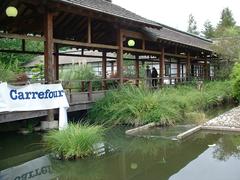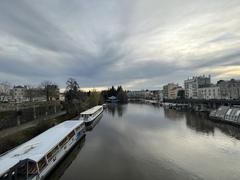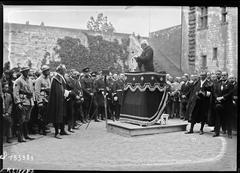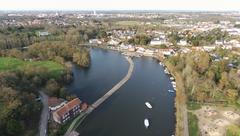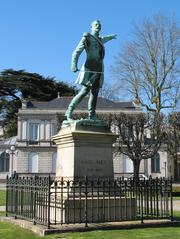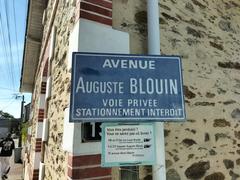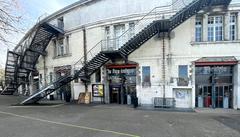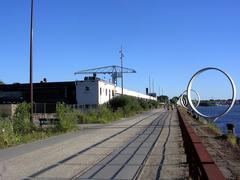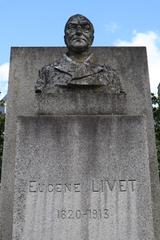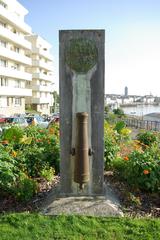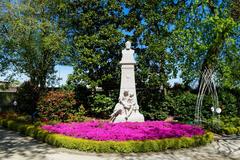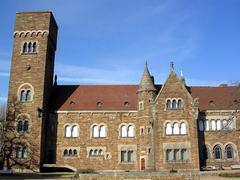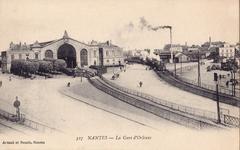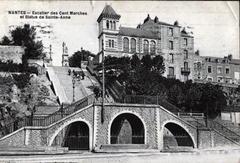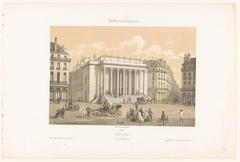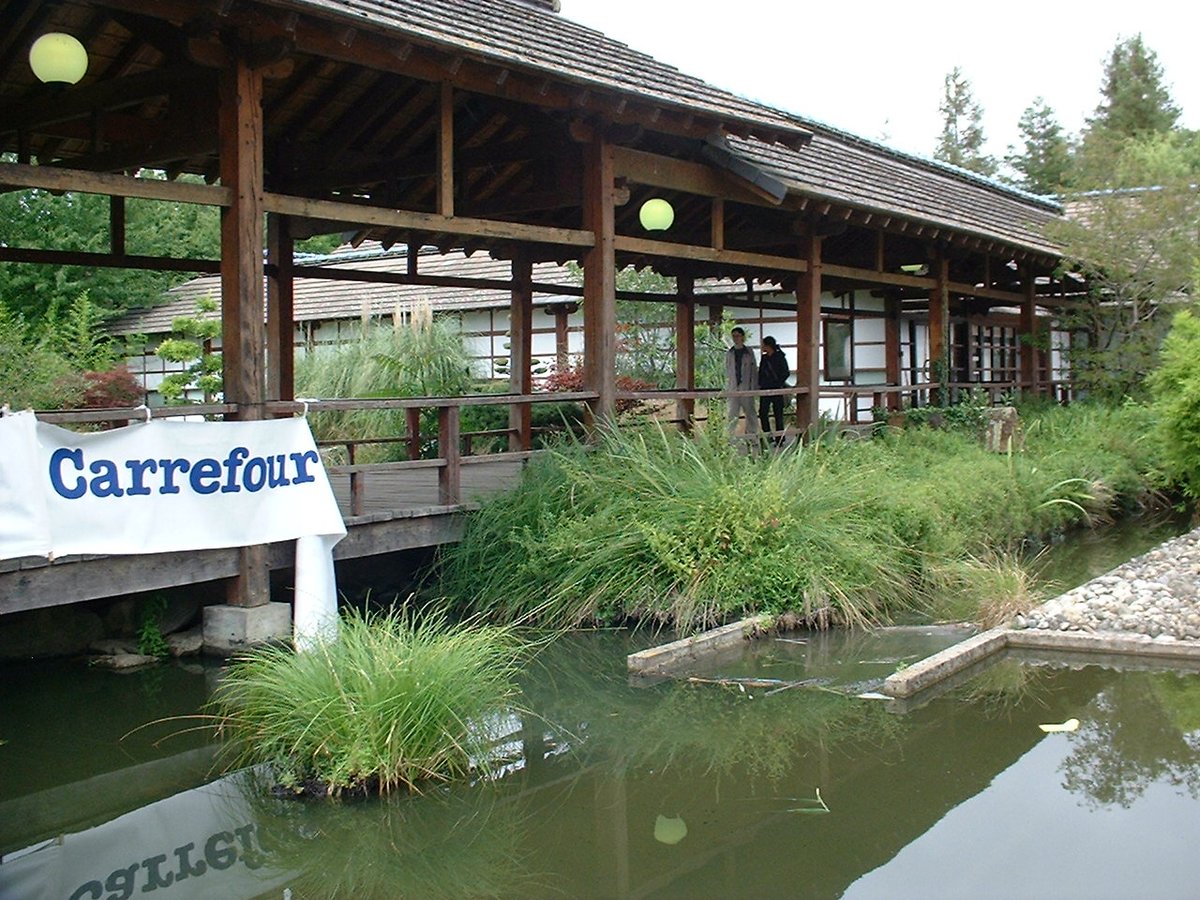
Comprehensive Guide to Visiting Île de Versailles, Nantes, France
Date: 18/07/2024
Introduction
Located on the serene Erdre River in Nantes, France, Île de Versailles is an artificial island that has seamlessly integrated natural beauty, cultural heritage, and urban development. Initially created in 1831 for industrial purposes, this island has undergone a transformative journey, evolving into a public park inspired by traditional Japanese gardens. The park, designed by Japanese landscape architect Kinsaku Nakane, features meticulously maintained gardens, koi ponds, and stone sculptures, reflecting the changing seasons and Japanese aesthetic. Today, Île de Versailles serves as a cultural and environmental oasis, hosting various cultural events, educational programs, and promoting sustainable practices. This comprehensive guide aims to delve into the island’s rich history, provide essential visitor information, and highlight its cultural and environmental significance (Nantes Tourisme, Nantes Metropole).
Table of Contents
- Introduction
- History and Significance of Île de Versailles
- Japanese Garden Influence
- Cultural and Recreational Significance
- Environmental Importance
- Architectural Highlights
- Visitor Information
- Nearby Attractions
- Community Engagement and Accessibility
- Historical Preservation Efforts
- FAQ
- Conclusion
History and Significance of Île de Versailles
Origins and Early History
Île de Versailles was created in 1831 as part of urban development projects aimed at enhancing the city’s landscape and infrastructure. Initially, the island served as a site for various industrial activities, including a sawmill and a shipyard, reflecting the industrial boom of the era (Nantes Tourisme).
Transformation into a Public Park
In the 1980s, Île de Versailles underwent a significant transformation. The city of Nantes decided to convert the island into a public park, a project completed in 1987. This transformation was part of a broader initiative to create green spaces within the urban environment, providing residents and visitors with areas for recreation and relaxation. The design of the park was inspired by traditional Japanese gardens, featuring elements such as stone lanterns, wooden bridges, and carefully manicured plants (Nantes Metropole).
Japanese Garden Influence
The Japanese garden on Île de Versailles, designed by Japanese landscape architect Kinsaku Nakane, is a central feature that adds to its unique charm. The garden includes a variety of plants, such as cherry blossoms, azaleas, and bamboo, which are meticulously maintained to reflect the changing seasons. The presence of koi ponds and stone sculptures further enhances the authenticity of the Japanese aesthetic (Jardin Japonais).
Cultural and Recreational Significance
Île de Versailles holds significant cultural and recreational value for Nantes. The park serves as a venue for various cultural events and activities, including traditional Japanese tea ceremonies, martial arts demonstrations, and seasonal festivals. These events provide an opportunity for visitors to experience and appreciate Japanese culture within a French urban setting (Nantes Culture).
Environmental Importance
The island promotes environmental awareness and sustainability. The park’s design incorporates eco-friendly practices, such as the use of native plants and sustainable water management systems. Educational programs and workshops are regularly held to educate the public about the importance of biodiversity and environmental conservation. These initiatives align with the broader goals of Nantes to promote green urban development and environmental stewardship (Nantes Green City).
Architectural Highlights
Île de Versailles features several architectural highlights contributing to its historical and cultural significance. The Maison de l’Erdre, a traditional Japanese-style building, serves as a visitor center and exhibition space. The building hosts various exhibitions and displays related to the island’s history, Japanese culture, and environmental conservation. The architectural design of the Maison de l’Erdre reflects the traditional Japanese aesthetic, with its wooden structure, sliding doors, and tatami mats (Maison de l’Erdre).
Visitor Information
Visiting Hours and Tickets
Île de Versailles is open to the public year-round. The visiting hours are from 8:30 AM to 8:00 PM during summer and from 8:30 AM to 6:00 PM in winter. Admission is free, making it an accessible destination for everyone. Guided tours are available upon request, providing deeper insights into the island’s history and design.
Travel Tips
The island is easily accessible by public transportation, with several bus and tram lines connecting it to the rest of Nantes. Bicycle rentals are also available for those who prefer a more active visit. It is recommended to wear comfortable walking shoes to explore the island’s pathways and gardens fully.
Nearby Attractions
When visiting Île de Versailles, consider exploring nearby attractions such as the Jardin des Plantes, a botanical garden, and the Château des Ducs de Bretagne, a historical castle. These sites offer additional opportunities to immerse yourself in the rich history and natural beauty of Nantes.
Community Engagement and Accessibility
Île de Versailles is a popular destination for both locals and tourists, attracting thousands of visitors each year. The park’s pathways and facilities are designed to be inclusive and accessible to people of all ages and abilities, ensuring that everyone can enjoy its beauty and tranquility. Community engagement is a key aspect of the park’s management, with regular volunteer programs and community events that encourage public participation and foster a sense of ownership and pride among residents (Nantes Community).
Historical Preservation Efforts
Efforts to preserve Île de Versailles’ historical and cultural heritage are ongoing. The city of Nantes has implemented various measures to protect the island’s natural and architectural features, including regular maintenance and restoration projects. These efforts are supported by local heritage organizations and community groups, who work together to ensure that the island remains a cherished and well-preserved landmark for future generations (Nantes Heritage).
FAQ
Q: What are the visiting hours for Île de Versailles? A: The park is open from 8:30 AM to 8:00 PM in summer and from 8:30 AM to 6:00 PM in winter.
Q: Is there an entrance fee for Île de Versailles? A: No, admission to the park is free.
Q: Are guided tours available? A: Yes, guided tours are available upon request.
Q: How can I reach Île de Versailles? A: The island is accessible by several bus and tram lines, and bicycle rentals are also available.
Conclusion
Île de Versailles stands as a testament to the successful integration of natural beauty, cultural heritage, and urban development. Its transformation from an industrial site to a serene public park reflects Nantes’ commitment to creating green spaces that enhance the quality of life for its residents and visitors. The island’s Japanese garden, cultural events, and environmental initiatives make it a unique and significant destination in Nantes, offering a peaceful retreat in the heart of the city. Plan your visit today and experience the tranquility and beauty of Île de Versailles (Nantes Culture, Nantes Green City).
References
- Discover Île de Versailles - History, Visiting Hours, and Tickets in Nantes, 2023, Nantes Tourisme
- Transforming Île de Versailles into a Public Park, 2023, Nantes Metropole
- Japanese Garden Influence on Île de Versailles, 2023, Jardin Japonais
- Cultural Events at Île de Versailles, 2023, Nantes Culture
- Environmental Initiatives at Île de Versailles, 2023, Nantes Green City
- Architectural Highlights of Île de Versailles, 2023, Maison de l’Erdre
- Community Engagement and Accessibility at Île de Versailles, 2023, Nantes Community
- Historical Preservation Efforts at Île de Versailles, 2023, Nantes Heritage
